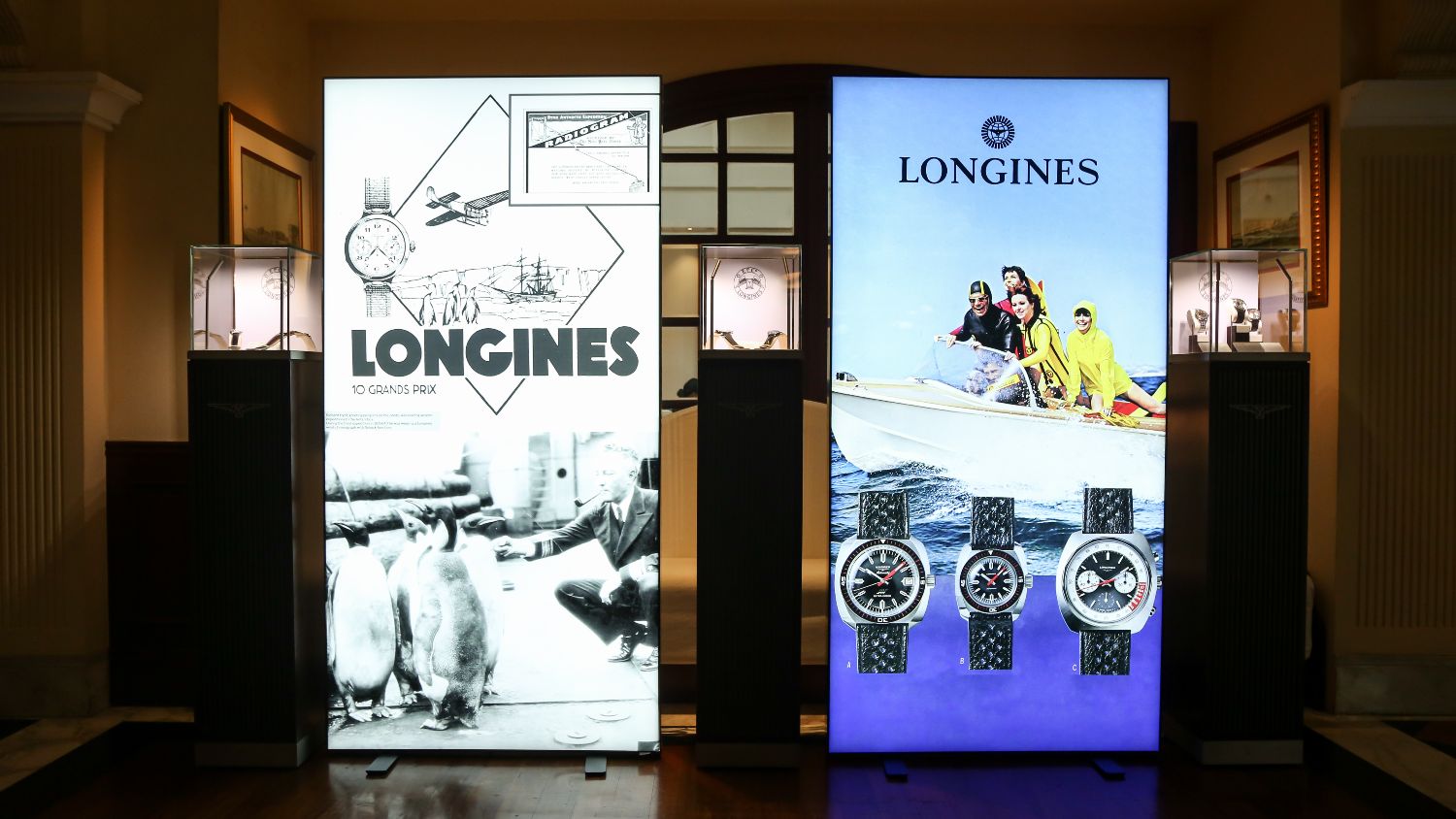Daniel Hug, Head Brand Heritage, Longines, is the person you go to to know about the coolest stories about Longines watches. Like how aviator Amy Johnson’s Longines’ watch was acquired by the brand at a live auction. Or how Longines’ made a special pilot’s watch for the Indian Air Force. As the head of Brand Heritage at Longines, Hug knows anything and everything about the legacy of Longines, which is close to 200 years old. Under him, The Longines Museum has thrived to become a readily accessible repository of the brand’s historical watches, movements, and timing instruments, and by extension, proof of its innovations and technical mastery through the decades.
 Daniel Hug, Head of Brand Heritage, Longines. Image: Courtesy Longines,
Daniel Hug, Head of Brand Heritage, Longines. Image: Courtesy Longines,
Recently in Delhi to talk about this and showcase never-seen-before museum pieces in India, WatchTime India caught up with Hug to know more about his work and Longines’s enduring legacy.
WatchTime India: You are so deeply entrenched in Longines’s history. What is its most striking aspect for you?
Daniel Hug: It is the fact that even now I discover new things about Longines’s history because it is so rich and wide. Recently, when I looked at the steel bracelet of the Longines Nautilus Skin Diver from 1958, I realised this is a very first steel bracelet for a diver’s watch with micro adjustment. It’s amazing! One specialist [I know] who knows everything about dive watches said that he had never seen such an old steel bracelet with micro adjustment on a dive watch. This is typically what makes my job interesting. Every month I see something from which I learn.
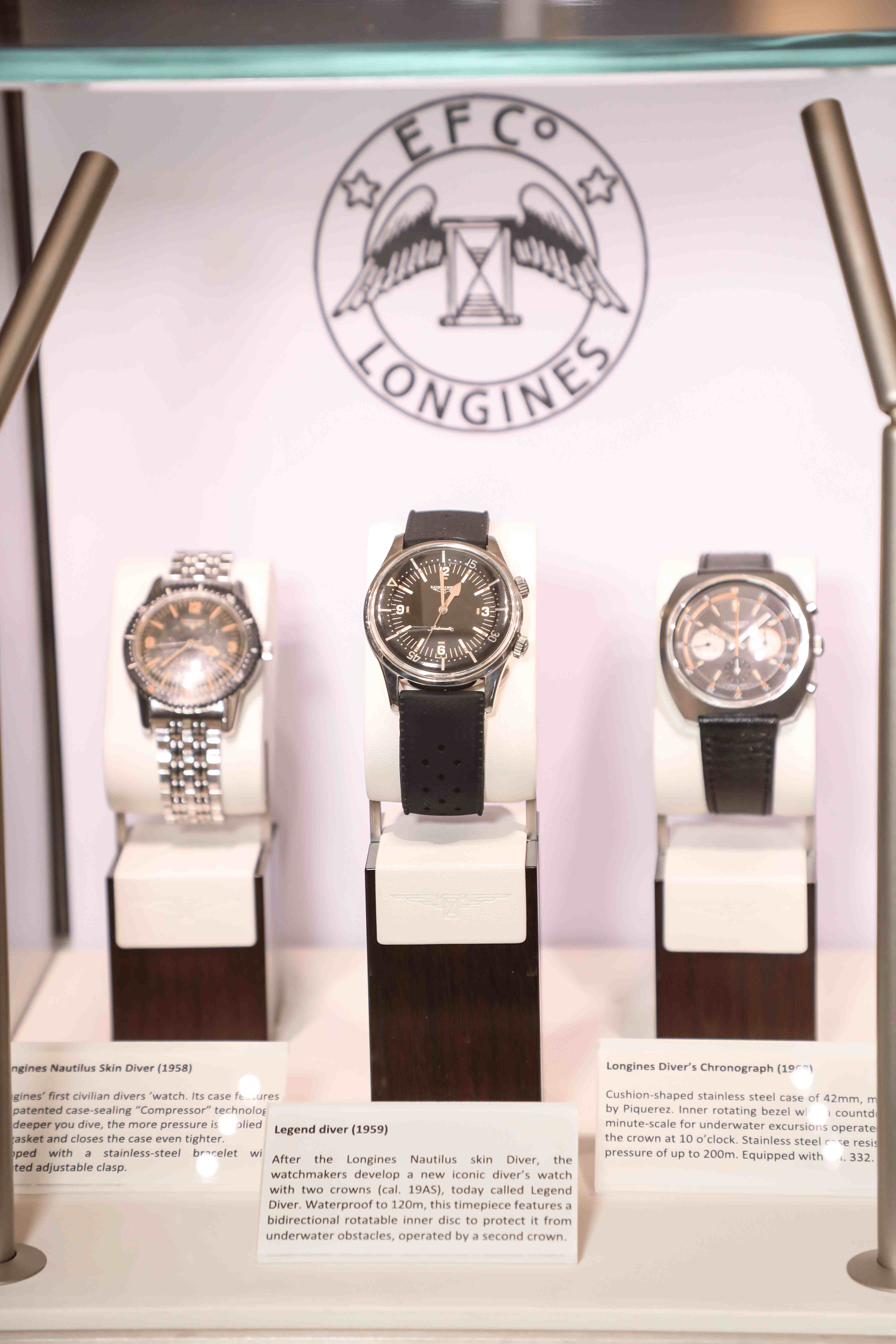 Longines's vintage dive watches. Image: Courtesy Longines.
Longines's vintage dive watches. Image: Courtesy Longines.
WTI: What goes into maintaining an archive like The Longines Museum?
DH: Every year we get about 12,000 enquiries from Longines owners who want to know more about their watch. Our archives are helpful to answer these questions. Our [record] books go back to 1867, which is the first production register that we have. This would have been worn out and torn if we had to constantly look in the physical books, so a year ago we digitised all the information in those books, and today I have an app that helps me trace the serial number with entry in the production registers. The second source is the book of invoices - I can compare the information there as well. Aside of this, we are about 10 people who are doing guided tours at the museum, answering question put to us by collectors, organising events, making presentations for the heritage conferences etc.
WTI: What is the process of adding new timepieces to the museum?
DH: It depends on what kind of timepiece it is. I bought a very expensive timepiece last year – it was the personal watch of aviator Amy Johnson. It was a 47mm watch that timed sidereal time for celestial navigation. I bought it at a live auction on the web, with our CEO besides me so make sure that I have the budget to buy it. I really had to convince him.
A lot of my team members actively follow what is going on in auctions, trading forums, web, and come to me with propositions to check if a particular watch is something for our museum. Then I evaluate if it is something that we need, something that is different from the 500-600 timepieces that we have in the museum; we also have a reserve of watches in the cellar, which is much bigger. Secondly, i look at whether the watch is an important and typical Longines watch. If it is a technical milestone, I always say, let’s acquire it. The third – does the watch have anything to do with our actual watch collection - is there red line that we can draw from the old to the new watch. For example, all the dive watches are interesting because we are still in the dive watch business – we have the HydroConquest, Legend Diver, UltraChron dive watch.
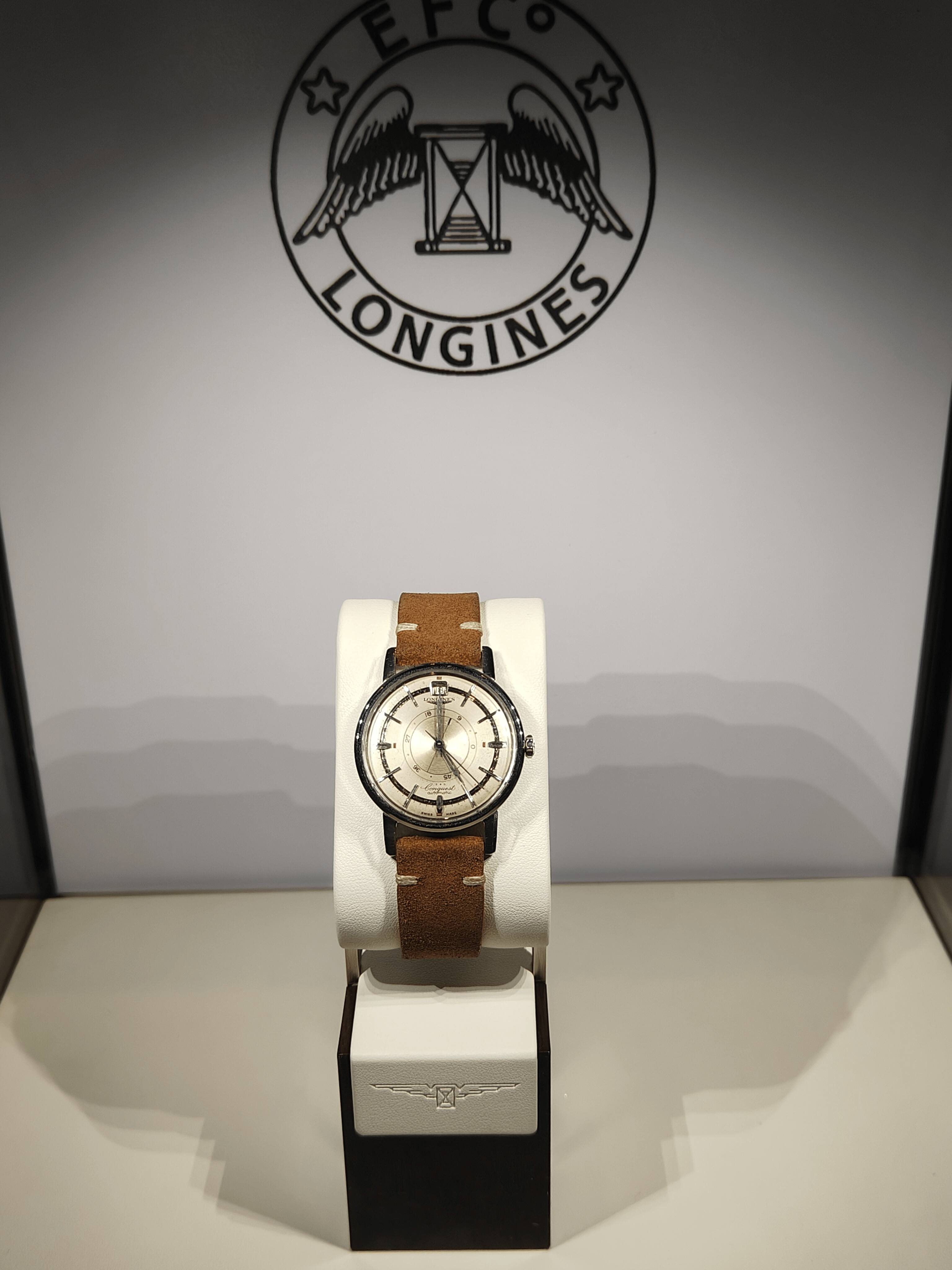 The first Longines Conquest Automatic from 1954, also the first Longines product family to be established.
The first Longines Conquest Automatic from 1954, also the first Longines product family to be established.
WTI: Do you have an input on which references get revived from the archives?
DH: If I am convinced that I have got something really special that is worth re-editing in a more modern way, sometimes I make a proposition to our head of product development. But it has to be useful even today, or be beautiful. The first Longines watch that I bought was the UltraChron, which I bought before I joined Longines, and I had proposed that - the result was the new UltraChron, where we took key elements like the high frequency, turning bezel, red dashes, a bit of the styling of the dial and case, and made it new.
The brand heritage is often the source of inspiration for product development. Usually, we have a tight collaboration with the product development team – we discuss the styling of the watch, though they are the specialists in this. I really just look at the coherence.
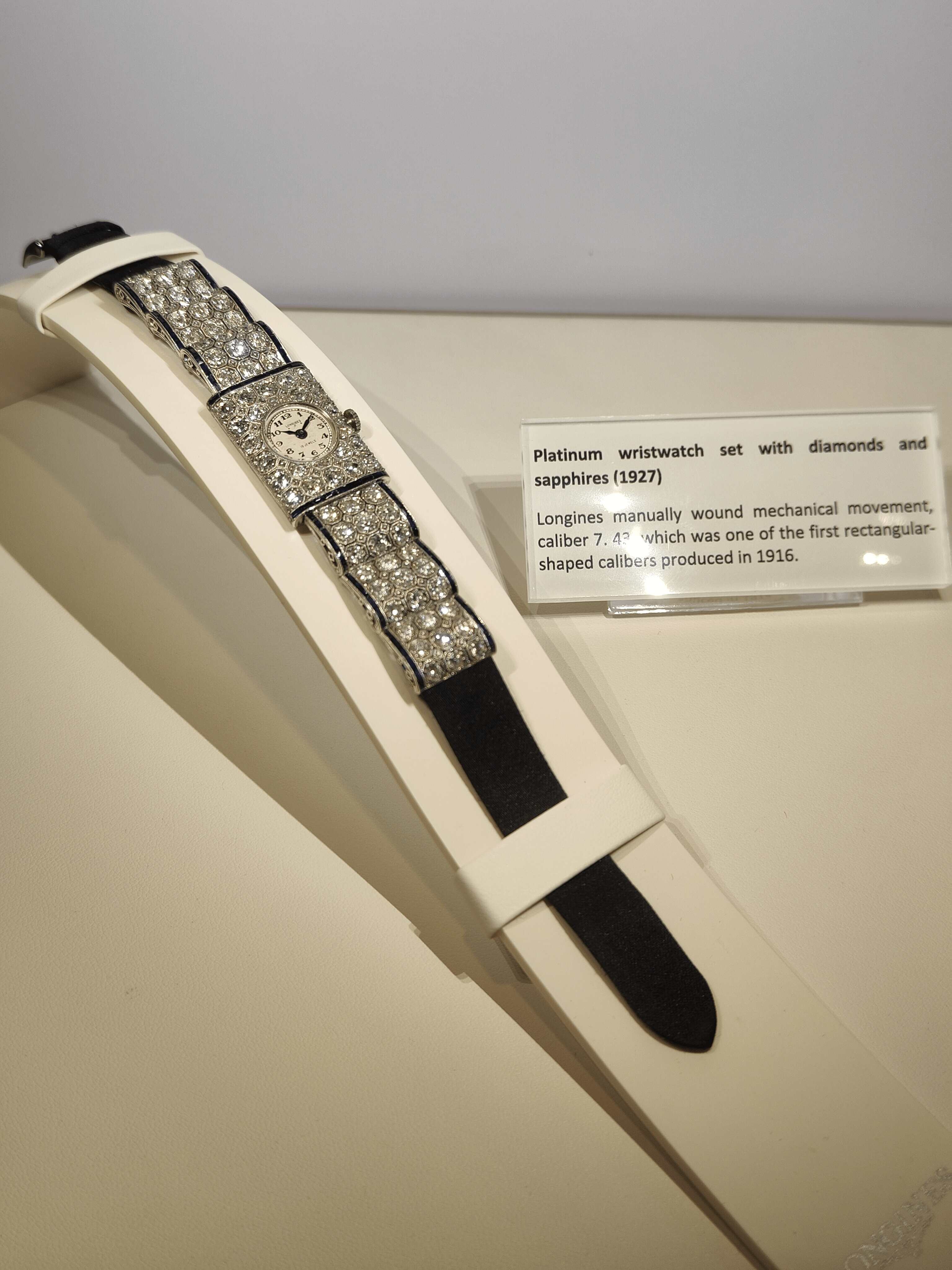 A Longines diamond-studded Art Deco vintage watch from 1927
A Longines diamond-studded Art Deco vintage watch from 1927
WTI: If it were upto you, which timepiece would get revived from the museum today?
DH: A timepiece that I admire a lot is the 13ZN12 or Dopia Lancetta or Sommatore. It’s a chronograph that Longines built in 1942 – it is a beautiful 39.5mm movement and has special mechanism. It shows the elapsed mins not on an auxiliary dial, but on big central minutes hand. You have an auxiliary counter for the 12-hour, and a permanent small seconds on the left. The conception was so brilliant in 1942. It was so advanced in its technical aspect and design. I would love to see that today.
WTI: A Longines watch that you would love to add to the museum?
DH: The Big Indian, a special pilot’s watch made for the Indian Air Force! The 44mm pilot’s watch is something very unique in terms of size, details like the luminous point of the seconds hand which normally is in dive watches, but apparently comes from pilot’s watch. It was shockproof and antimagnetic. I am searching for that one. I know that some brilliant collectors who have it, and they have showed it to me. Then it is in the book by John Goldberger who presents two examples. It has the military sign on the dial, and engraved on the movement.
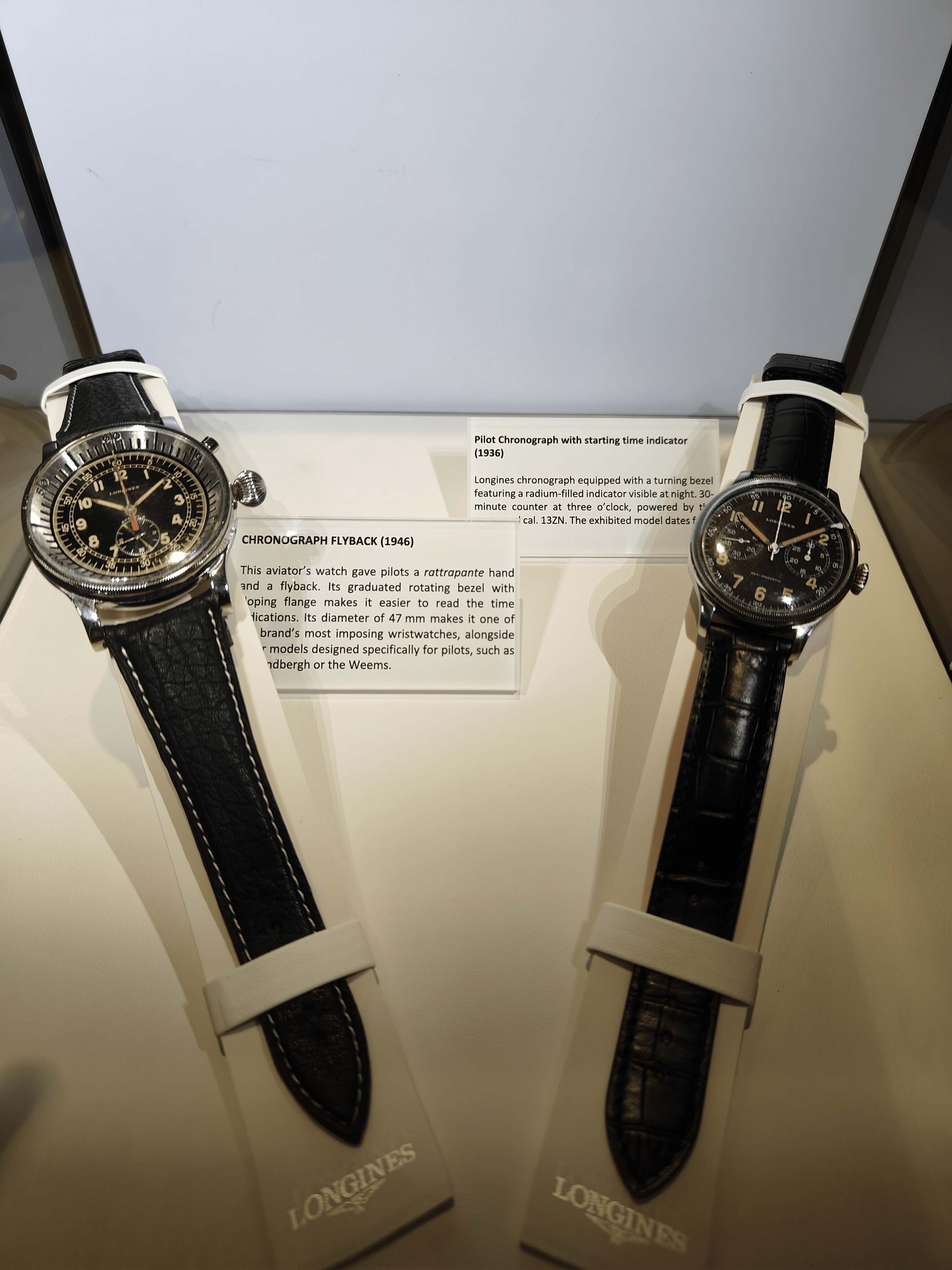 Longines's vintage chronographs
Longines's vintage chronographsWTI: Longines started the Collector’s Corner initiative in the Geneva boutique where restored vintage watches are being offered for purchase. Could you elaborate on its progress?
DH: There was an interest from the team of the Swiss market, and [they said] it would help the enrichment of the boutique in Geneva. This is an initiative of the Longines Brand Heritage department, where our team searches for and acquires the watches. Then the watches go through the heritage workshop, where they are detached, cleaned, oiled, and reassembled. Then we give a warranty of two years and a profile is established, like the history of the watch, what makes it special.
The watches come from ex Longines retailers, or we buy in auctions, or from vintage watch specialists or from collectors come to us who have two of the same model. Once there was a gentleman from Greece whose grandmother was a Longines retailer, who came to me and said that he found 20 Longines watches in a drawer, and if I was interested in acquiring them. They had never been worn. This is the best case for us – new old stock!
Turns out that the initiative is highly in demand, so sometimes the offering is sold out very quickly. Of course we have limited capacity in the heritage workshop too, where the team is putting a lot of effort into getting the best out of these vintage watches. We have enquiries from other markets who want to establish a Collector’s Corner in their boutiques and we will probably get a second and third one if we can increase the capacity.
WTI: Your favourite Longines piece from the museum?
DH: At the moment, the 13ZN.12





